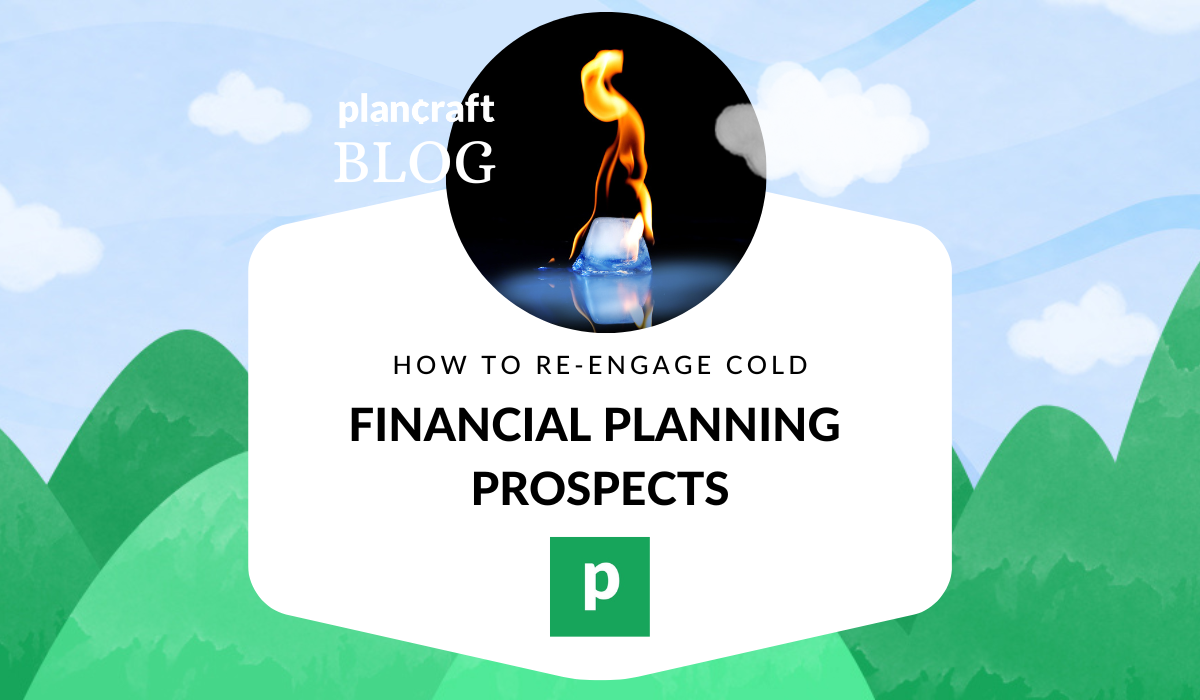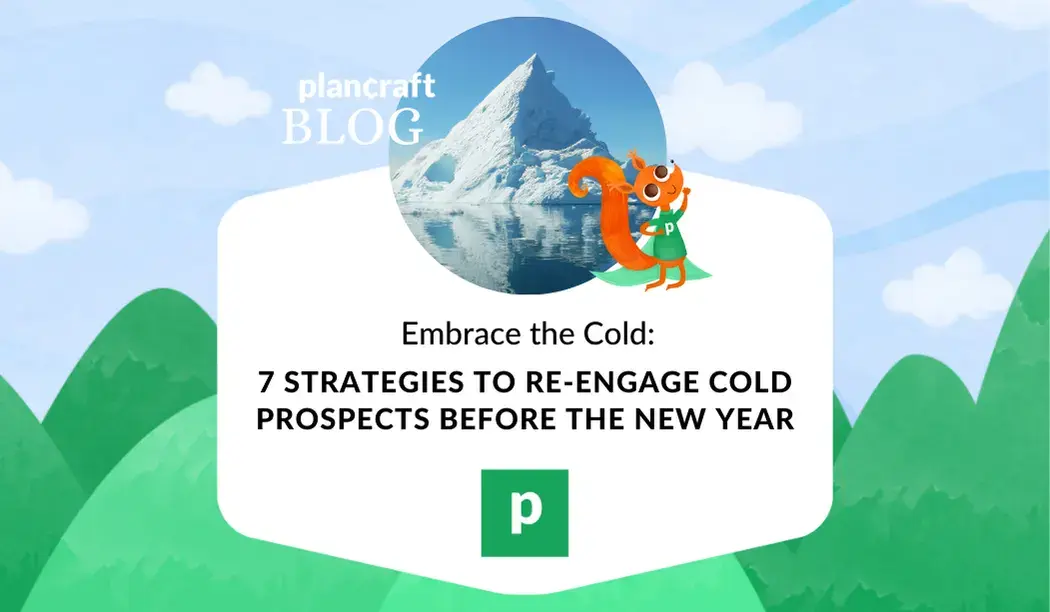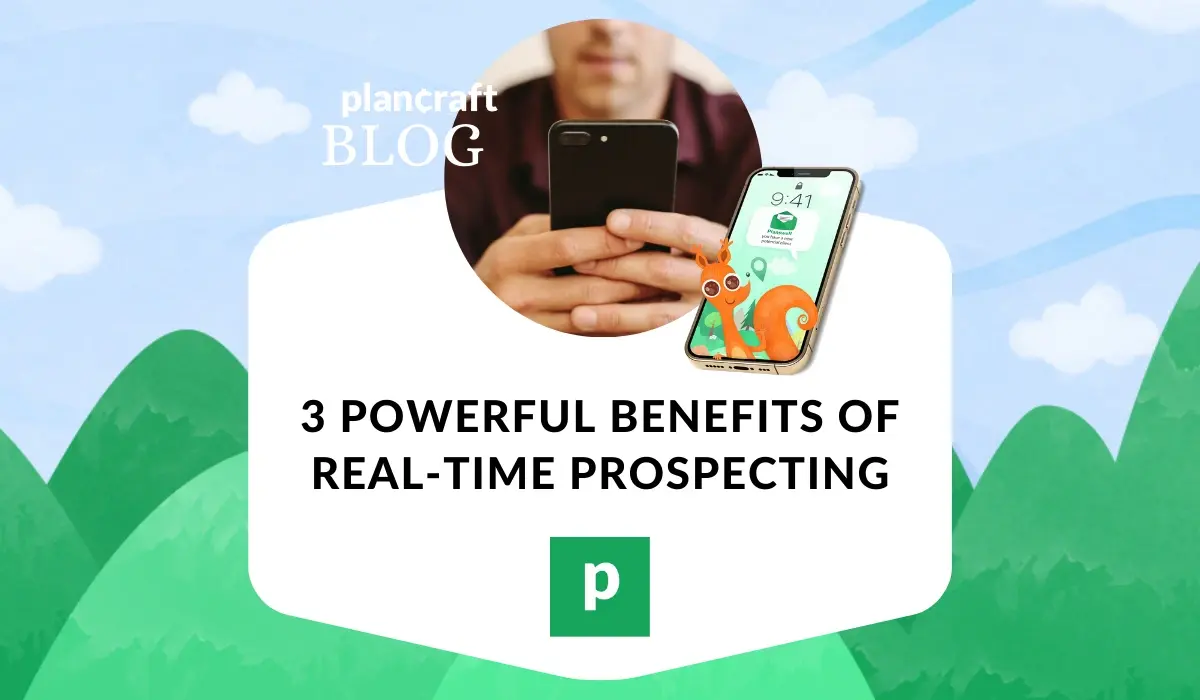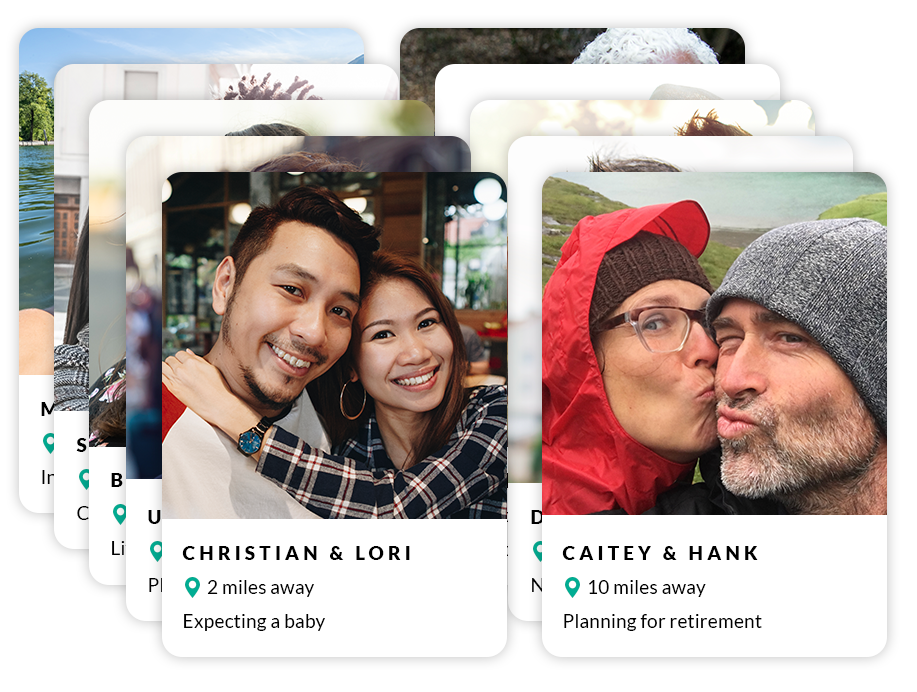Like many financial advisors, you might glance through your CRM and find that it's chock full of cold prospects and old leads that just sort of hang around and make it harder to find the contact information for prospects you're currently working.
If your blood pressure just elevated at reading that, hang on a sec — don't rage-delete those old leads just yet.
Just because your previous conversations with a prospective client are older than your Brita filter, doesn't mean you can't re-engage cold prospects and earn business you thought was gone for good.
In fact, legendary Planswell advisors Andy Cosby and Ermos Erotocritou have been re-engaging cold prospects with incredible success for years.
(They actually recorded a free webinar on the topic, but you need to be a Planswell expert to watch it. Don't worry, you can become one for free by clicking here.)
If you don't have time to watch the webinar, that's okay too. We've distilled the essence of their wisdom and will share key tips and tricks you can use to re-engage old leads below.
Why Did They Become Cold Prospects?
Before you start the process of re-engaging past prospects, you need to take a minute and assess why they went cold in the first place. There could be any number of reasons why your past conversations with a prospect didn't lead to them converting, and depending on that reason, your approach will likely differ.
Here are some of the common causes Andy and Ermos have found for prospects going cold along with some sage advice on how you might avoid this fate going forward.
You only called once
This one is probably the simplest and also the most common of mistakes advisors make when calling potential new customers: they make one phone call, (maybe) leave a voicemail, and then move on with their lives.
This is a surefire way to fill your CRM with cold prospects faster than your inbox fills with spam emails after you use it to enter a contest online. Because that's exactly what these prospects are going to think your call is in this situation: spam.
You know what kind of caller only calls once and maybe doesn't even leave a message? TELEMARKETERS. But that's not what you are. You're calling to help, because you have a valuable service that will fill a need this person has.
And, it's your responsibility to ensure that you get in touch with your prospects.
So, don't just call once, or even twice. You may think that making five calls to a person over the course of two weeks would feel like you're pestering them, but that's not it at all. You're showing you care, that you're willing to put the time in to get a hold of them, because what you have to discuss is important.
A lack of empathy
Andy and Ermos have found, when listening in on advisors' calls during coaching sessions, that lots of them tend to jump right into a sales pitch once they get someone on the phone. If you're talking over every person you call and failing entirely to listen and be empathetic to their needs, you're making a huge mistake.
You absolutely must listen to the folks you call and be empathetic to their needs — that's how you'll discover their "why" and thus how you can be of service to them.
Did you provide value?
Once you've learned what exactly it is this person needs, you'll need to make sure that you give them a reason to want to go into business with you. Give them what they need.
Sharing success stories is a great way to demonstrate the value you can provide. Rather than selling them on specific products, you want to show that you're able to help them in exactly the way they need to be helped.
Selling, in the words of Andy Cosby, is helping. And if you're not helping them, you surely won't be selling them anything.
Bad timing
People are busy. Sometimes you call someone when they're in the middle of dinner, or trying to get four screaming children into the car to go grocery shopping, or taking a nap.
You can't take these things personally.
If you call someone and it isn't the right time to talk, rather than lumping them in with the other cold leads, ask them when you should call back.
And then, of course, actually call them back.
Remember, persistence isn't pestering — it's showing you care. And if you're persistent, you'll find yourself having to re-engage a lot fewer prospects because you were able to engage them the first time around.
Differentiate Yourself
When calling to re-engage old leads, one thing that's important to understand is that you absolutely must distinguish yourself, and the best way to do that is by demonstrating to the folks you're calling that you can be of service to them.
Many people whose job it is to sell over the phone do so in a commodity-driven way. It's all "here's this product I have and you can get it for this much." Acquiring paying customers through this type of strategy is much more difficult, because they are instantly wary of you because they feel like they're being sold to, which they are.
Instead of selling a product, attract customers to you by providing valuable information and services. Something as simple as a market update is likely relevant content (especially if you're working with Planswell households who you know have a vested interest in securing comfortable retirement).
Calling someone to say "hey, I wanted to let you know what was going on and that I'm here if you need anything" shows that you care about this person's well being, not just their money, and that will go a long way towards actually earning you their business.
Use Social Media as a Research Tool
Before calling up an old prospect you've deemed "cold," it's a good idea to do a little research on the front end. If you can access their social media pages to find some common ground you might be able to use to build rapport, it will be much easier to get your foot in the door.
Just be careful here: you don't want to stalk anyone online. If you don't know someone well, congratulating them on, for example, their daughter's victory in her soccer tournament last weekend, is going to come off super creepy.
On the other hand, being able to casually mention that you went on a really nice walk with your dog Bosco yesterday when you know they also have a dog, or that you're looking forward to the Blink 182 reunion tour when you know they already attended one of the shows, will help you build rapport in a way that doesn't feel like you're invading their personal life.
What to Send and When
A common practice in the financial advising business is to send direct mail to re-engage clients and prospects alike. Some of this is helpful, and some is not.
3 better ideas than sending holiday cards
Most people barely look at holiday cards when they have photographs of their family members on them. Getting one from a financial advisor that you maybe spoke with on the phone a few months ago is not going to re-engage anyone in the services you could provide.
What's more, people get an absolutely ungodly amount of holiday cards from businesses they've interacted with, so even if they might have glanced at it once, it's almost certainly going to be buried in a deluge of mailers from their dentist, their mortgage broker, their florist, etc.
Here are three better ideas than wasting your money sending holiday cards to old leads:
-
Send a $5 Starbucks gift card on their birthday
Rather than sending a piece of cardboard for someone to place directly into their garbage can, why not send them something they'll actually appreciate? Everyone loves free coffee, and most people love it even more than pictures of their actual children.
If you're thinking "sending $5 gift cards to all of my old leads seems like an even bigger waste of money," Andy and Ermos would have to disagree. Let's do some quick math to illustrate their point:
Let's say you spend $6 per card (including mailing and the $5 gift card) and send cards to 50 of your old leads you assumed were dead. That will cost you $300. Now, let's say 10 of those 50 people book meetings with you as a result, and you close only 1 of them as actual clients. Will you make more than $300 from that one extra client you got? You betcha. #worthit.
-
Send an ice cream cake to their workplace
Another point Andy and Ermos make is, for the most part, you should never send anything to a person's house. Instead, send gifts to their place of business. Why? Visibility.
An even better idea is to send them something they'll have to share, like a cake. And the best idea is to send them something they'll have to share that melts quickly, like an ice cream cake.
If you send an ice cream cake to someone's office, they will share it with their coworkers. Now everyone will be asking them what the occasion is and where they got the cake from. And they'll say they got it from you, their financial advisor. And now the whole office is going to be wanting to give you a call.
-
Send something fun for their kids
"Hey now, wait a minute," you might be thinking right now. "Isn't this just as bad as congratulating them on a sports game you saw on social media?"
The short answer is no (at least not if you do it right).
Now, definitely don't send them any sports trophies, but if you know that an old lead has a kid and their birthday is coming up, send a birthday card. You’ll be the only professional they interact with that does, so you’ll stand out (in a good way).
Stop "Checking In"
"Checking in" is something jealous boyfriends do when their girlfriends are "out with the gals," and you definitely don't want to be giving out jealous boyfriend vibes when you're trying to re-engage old leads.
Call to action
Instead of "checking in," which will end with a frustrated "everything's fine" and a click as you're hung up on, you need to find a way to provide ongoing value to the folks you're calling. So, every call you make to re-engage old leads should have some sort of call to action, or reason you're calling that actually matters.
Here's a quick list of some good, general ideas for CTAs that will help you re engage folks you may not have spoken to in a long time:
- Invitation to a webinar or other event you're hosting
- Provide access (to you), as in "it's been a while since we've spoken and I wanted to make myself available to you to answer any questions you might have about your financial situation."
- Ask questions to learn more about their needs so you can fulfill them, as in "we haven't chatted in a while and I wanted to ask you a few questions so I can update my understanding of your situation to see how I might be able to provide service to you."
Mix it up
Andy and Ermos advise that you definitely mix up the methods of communication you use when attempting to re-engage old leads. You never know the specific way any one person prefers to receive communication (unless you ask, which you should), so it's a good idea to send emails, make phone calls, and more.
They also note that sending a personalized video to each person is a fantastic idea.
It will only take you a few minutes to record a video to send to each individual you're re-engaging with, and that kind of personal touch goes a long way. What's more, it's much easier to convey emotion in a video than in an email unless you're the most excellent of writers (and even then, they may not even read it).
Don't give facts; tell stories
Most people probably don't remember what year it was when the British forces surrendered and the United States won the revolutionary war (it's 1781 just in case you were wondering).
Everyone, however, remembers the story of Paul Revere's midnight ride to warn the colonists that "the British are coming!"
This is because, as Andy points out, people will always forget facts, but they remember stories, and you should adjust your calling strategies accordingly. Share what you have learned from your past experiences. Tell them what has worked for your other clients, and what hasn't.
They don't even have to be your stories; borrow them from peers and colleagues. It's all social proof that you can be of service and have the expert knowledge to lead them down a path to financial prosperity, and the stories of your success will stick with them.
The Gist
Just because a prospect has gone cold, doesn't mean you can't still earn their business. In fact, industry allstars Andy Cosby and Ermos Erotocritou have plenty of experience reviving prospects that appeared dead.
Here's the abridged version of their advice on how to do just that:
- Assess why a prospect went cold in the first place. There are lots of common mistakes advisors make when calling, and depending on what happened, you could do different things to re engage.
- Differentiate yourself — show prospects how you can be of service to them. Rather than trying to sell them on products, learn what they need and provide it to them.
- Use social media as a research tool (but don't stalk). Find common ground you can bring up casually in your calls to build rapport.
- Don't send holiday cards. Instead, consider sending birthday cards to their kids, $5 gift cards to Starbucks, or a cake to their place of business.
- Include a call to action in all of your communication, and mix up how you communicate (email, phone calls, video messages, etc.)
- Don't give facts, tell stories. Stories are much more memorable.
FAQ
How do you prospect for financial planning clients?
There are as many different ways to prospect for financial planning clients as there are ways to communicate with another person. Many advisors send direct mail to people’s homes; some send emails, make phone calls, or invite prospects to free dinner seminars on financial planning topics.
At the heart of many of these strategies is the purchase of a lead list — a list of hundreds or thousands of names and phone numbers, mostly people who probably don’t want to get a call from you.
Planswell offers a solution for advisors tired of traditional prospecting, because we solve the problem for you: the households we send to our expert advisors are a) exclusive, b) have demonstrated an interest in building a financial plan, and c) are delivered in real-time (meaning, right after they fill out our discovery survey and SMS validate their phone number to access their financial plan).
If that sounds awesome, it’s because it is. If you’re looking to grow your business, you should consider giving us a shot.
What is the most effective way to get a prospect involved?
We’ve discussed many of them in this blog post, but some of the most important strategies for engaging any prospect are to ask them open ended questions, be genuinely curious about their lives, actively listen during conversations, and share success stories from your or your colleagues' experience.









